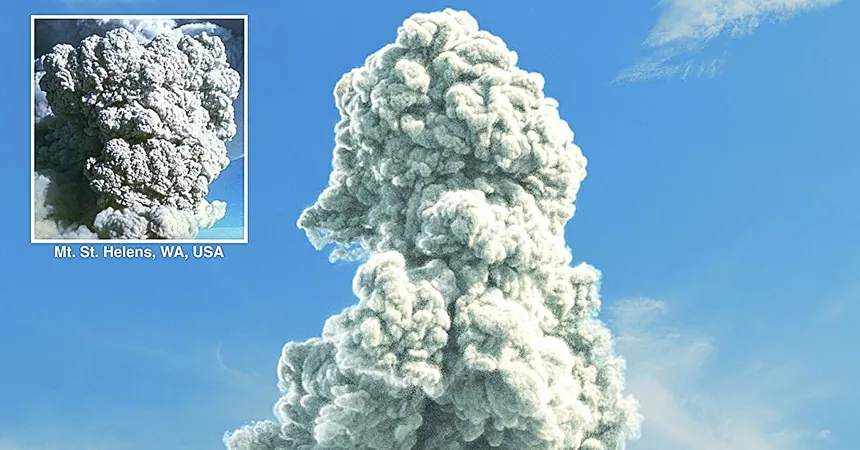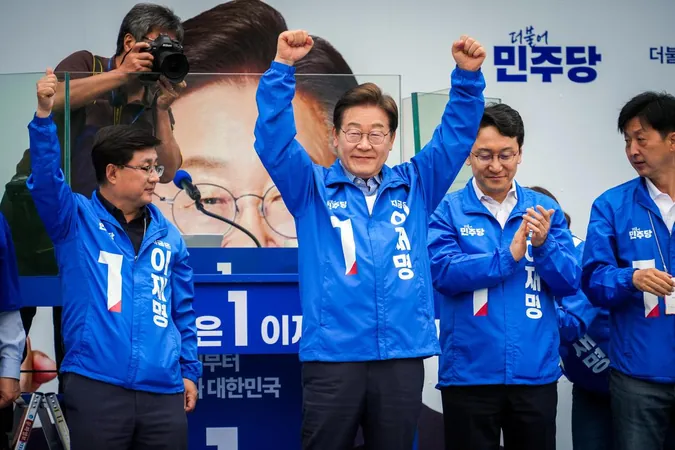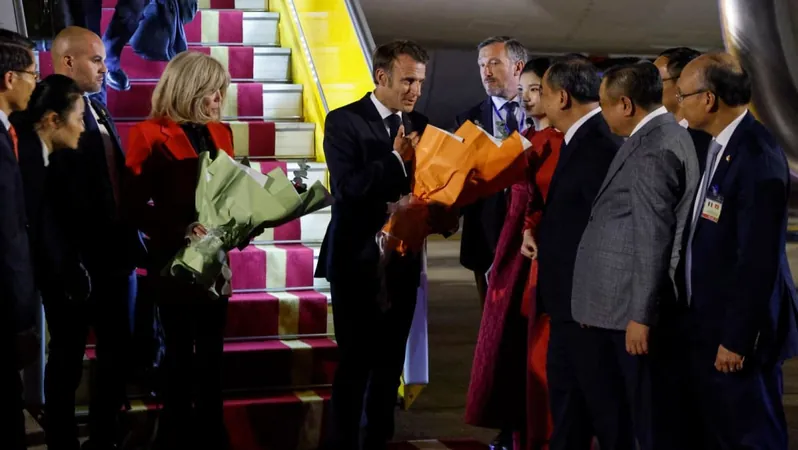
Revolutionary Technique Offers Unprecedented Realism in Fluid Dynamics Simulations
2025-01-06
Author: Ming
Revolutionary Technique Offers Unprecedented Realism in Fluid Dynamics Simulations
In a groundbreaking development, researchers at the University of California San Diego have unveiled a revolutionary technique that produces strikingly realistic simulations of fluid dynamics, particularly in phenomena like smoke and volcanic eruptions.
This innovative research, showcased at the SIGGRAPH Asia 2024 conference, garnered a Best Paper Honorable Mention, underscoring its significance in the realms of computer graphics and physics-based simulation. The findings have been published in the prestigious ACM Transactions on Graphics.
The team pushed the boundaries of visual fidelity by comparing their cutting-edge simulations to a historical photograph of the 1980 eruption of Mount Saint Helens in Washington State. The results were astounding – the computer-generated rendering accurately replicated the intricate billowing, twisting, and curling motions that characterize natural smoke plumes. Unlike traditional methods that struggle with capturing the complex details of fluid behavior, this new approach ensures that such features are rendered with precision and clarity.
Cutting-Edge Efficiency
One of the major challenges in fluid dynamics is achieving high levels of realism without exorbitant computational costs. The method developed at UC San Diego introduces a more efficient process that preserves the essential physical properties of fluid motion – energy and circulation. By enabling precise simulations, this technique has far-reaching implications: it can be applied to both scientific analysis of atmospheric phenomena and high-quality computer-generated imagery (CGI) for movies, video games, and virtual reality experiences.
The inventive technique, named Coadjoint Orbit FLIP (CO-FLIP), enhances existing Fluid Implicit Particle (FLIP) methodologies by ensuring that fluid behavior is represented consistently over time. Remarkably, CO-FLIP can deliver high-quality results even at lower resolutions, making it particularly valuable in time-sensitive fields like film production and interactive gaming.
Bridging Science and Art
Not only does this innovative method elevate visual effects in entertainment, but it also opens new avenues for scientific inquiry. Accurate simulations can provide insights into environmental issues, such as smoke dispersion patterns and air quality following eruptions, proving vital for researchers and policymakers alike.
Though differential geometry is often associated with general physics and curved spaces, the team adeptly adapted its principles to fluid simulations in flat space scenarios. This unique approach allows for a geometrically formulated equation of fluid motion, enabling better preservation of visual and physical fluid characteristics, including vortex behavior, which has historically been problematic in simulations.
The Future of Fluid Dynamics Simulations
As researchers continue to unveil the mathematical intricacies behind CO-FLIP and its implications for fluid dynamics, the combination of speed, efficiency, and exceptional visual realism promises a new era for simulations. Imagine a future where scientists can visually predict volcanic eruptions and filmmakers can create mesmerizing CGI with unparalleled authenticity!
This advancement is not just about simulations; it represents a leap towards a deeper understanding of our world through the lens of computer graphics. With tools like CO-FLIP, both scientific and creative communities stand to benefit immensely, making this breakthrough a game-changer in the field of fluid dynamics simulation.
Stay tuned for what’s next, as this cutting-edge research paves the way for innovations that could redefine industries and impact our understanding of natural phenomena!




 Brasil (PT)
Brasil (PT)
 Canada (EN)
Canada (EN)
 Chile (ES)
Chile (ES)
 Česko (CS)
Česko (CS)
 대한민국 (KO)
대한민국 (KO)
 España (ES)
España (ES)
 France (FR)
France (FR)
 Hong Kong (EN)
Hong Kong (EN)
 Italia (IT)
Italia (IT)
 日本 (JA)
日本 (JA)
 Magyarország (HU)
Magyarország (HU)
 Norge (NO)
Norge (NO)
 Polska (PL)
Polska (PL)
 Schweiz (DE)
Schweiz (DE)
 Singapore (EN)
Singapore (EN)
 Sverige (SV)
Sverige (SV)
 Suomi (FI)
Suomi (FI)
 Türkiye (TR)
Türkiye (TR)
 الإمارات العربية المتحدة (AR)
الإمارات العربية المتحدة (AR)